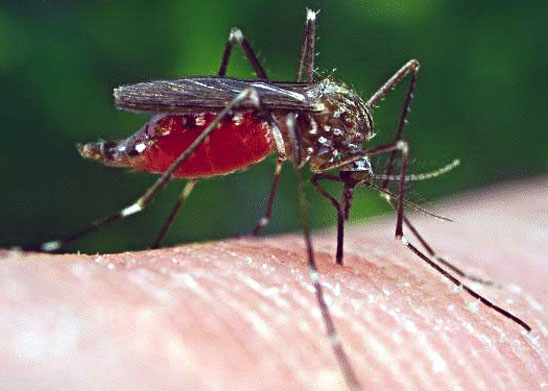Mosquito indexing system identifies best time
to act against potential West Nile Virus outbreaks
Professor and alumnus team up to identify precursors of West Nile Virus outbreaks.

Researchers who analyzed a decade of data related to West Nile Virus and, in particular, the 2012 West Nile epidemic in Dallas County, have identified important precursors of West Nile Virus outbreaks that allow for early and effective intervention.
An analysis of the West Nile data, along with weather and housing data, found that the epidemics begin early, after unusually warm winters; are often in similar geographical locations; and are predicted by an index based on an estimate of the average number of West Nile virus-infected mosquitoes collected per trap-night, called the Mosquito Vector Index.
As a result of their data analysis, the researchers recommend the use of a vector-index rating system to identify the best timing and location of early interventions.
The researchers, from Southern Methodist University, UT Southwestern Medical Center and Dallas County Health and Human Services, reported the findings in the July 17 issue of The Journal of the American Medical Association.

“In years when the vector index didn’t start up until late July or August, impending outbreaks just sputtered — in late summer mosquito abundance declines and mosquitoes become less active and stop biting as much. When the vector index goes above .5 early — June or July — right then large numbers of people are silently getting infected, and this should be the best time to intervene,” said senior author Robert W. Haley, Chief of Epidemiology and Professor of Internal Medicine at UT Southwestern and a 1967 graduate of SMU.
“After the infecting mosquito bite, on average it takes a week for the first symptoms to develop, a week to see people turning up at hospitals, and a week for laboratory confirmation of the diagnosis and reporting to health officials,” Haley said. “That three weeks is critical. Acting early from the vector index rather than after human case reports and deaths mount up can nip an outbreak in the bud. However, if mosquito data are unavailable or consensus to intervene takes longer, later intervention may still be important to terminate the outbreak.”
The analysis found also that less of a hard freeze during winter months and unusually warm spring temperatures contributed to epidemic years for West Nile, a major concern as global temperatures continue to warm, Haley said.
A fourth critical finding in the paper related census track data to the 2012 outbreak, showing that areas of higher property values, higher housing density, and higher percentages of unoccupied homes were at higher risk. That’s likely due to fostering the types of environment and mosquitos most likely to transmit the disease, which is carried more by house mosquitoes than wooded mosquitoes. In Dallas County, the data showed year-after-year clustering in the Park Cities and North Dallas areas.
The analysis tools used in the study may be applicable elsewhere, but due to variations in weather, mosquito populations and other factors, each region or county will need to conduct its own analysis to identify the most appropriate vector index rating signaling when to act, Haley said. Along with the paper, the authors provide an instruction manual for other counties to calculate the vector index from their own mosquito infection surveillance data.
“Given the leading character of this index, epidemiologists and government officials can implement, in a more timely manner, preventative measures to reduce the impact of future West Nile Virus outbreaks,” said data modeling expert Thomas B. Fomby, Professor of Economics and the Director of the Richard B. Johnson Center for Economic Studies at SMU.
Fomby provided the time series expertise needed to analyze the leading nature of the vector index and determine that aerial spraying used during the epidemic did not have any significant adverse health effects on the general public.
“Time Series Count modeling and Event Analysis are statistical methods that are frequently used in economic research but not so often used in medical research,” Fomby said. “Time Series Count modeling was used to investigate the leading nature of the vector index while Event Analysis was used to examine the impacts of aerial spraying. This is a prime example of where interdisciplinary tools can be useful in conducting scientific research.”
Read the full story on SMU's Research Blog.
# # #